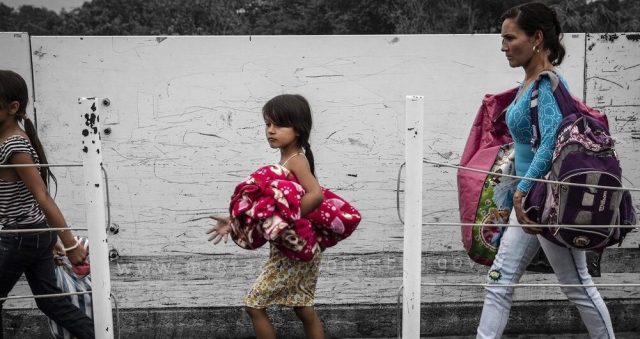
There’s a lot we know about Venezuelan migrants and refugees. As far as what we don’t know, we’re now getting new information that tracks where Venezuelans are, in what conditions, and their intentions to stay – or return.
What do we know?
By Caracas Chronicles – Betilde Muñoz-Pogossian
That 5.1 million Venezuelans have been forced to move to other countries.
That Venezuelans have become the second nationality with the largest number of asylum applications worldwide.
That, if we look at the list of countries with the greatest number of new asylum seekers, “Venezuelan” is the nationality at the top – globally.
That the Venezuelan migration crisis is the second largest displacement crisis in the world after Syria’s, and the largest in the recent history of the Americas.
We also know that around 80% of Venezuelan migrants are settling in countries of the region, and that around 60-70% are in an irregular situation without papers that allow them to access basic services such as medical care, water, sanitation, hygiene and housing.
All of this has worsened with the arrival of the COVID-19 pandemic, which is putting health systems to the test, along with the capacity of countries hosting Venezuelan migrants and refugees to guarantee them access to health, and a minimal well-being in the crisis situation we live in.
But do we know who these migrants are? How long did it take them to migrate? How much did they pay? Do we know their backgrounds and professions? What are their intentions regarding staying or moving back to Venezuela?
A recent report by the International Organization for Migration (IOM) along with the Migration Policy Institute (MPI) is giving us more information on what we didn’t know about Venezuelan migrants and refugees.
You see, the IOM has been continually implementing a methodology known as DTM, or Displacement Tracking Matrix, which is a system for tracking and monitoring displacement and population mobility. Using DTMs, they collect data on migrants’ demographics, economic activities, health conditions, access to health services, details of their trip, and challenges encountered while travelling.
Some interesting findings suggest that Venezuelan migrants and refugees are bringing important human capital to their receiving countries.
They have been collecting data on Venezuelans, and some interesting findings suggest that Venezuelan migrants and refugees are bringing important human capital to their receiving countries. As reported, 35% of the Venezuelan population in Peru has a technical degree or higher, a figure that increases to 41% in the case of Ecuador. In the case of Argentina, Chile, Paraguay, Uruguay and Costa Rica, more than 50% of Venezuelan migrants obtained a university degree and in some cases, a postgraduate degree.
Likewise, the analysis of DTM data for Venezuelans reveals that most migrants are young and single. Surprisingly, in many cases, these migrants and refugees plan to remain in the countries that have received them in the long term. According to the data, around 5% or less of Venezuelans who responded indicated they intended to return. What this says is that, on one hand, this diaspora can become a strength for the receiving countries of the Americas, which must take advantage of the potential of this population’s talent, and on the other, that they can have a key role in Venezuela’s reconstruction post-democratic transition.
The data also shows the average amount of time that it took Venezuelans to arrive at their countries of destination. While the shortest trips were 2.5 months to countries such as Ecuador or Peru, it took some Venezuelans, especially those arriving to countries in the south of the region, seven months and a half to arrive, sometimes even more. The costs they reported paying also varied from $100 dollars to more $1,000 to destinations farther in the map.
The issues more commonly reported as challenges in their journey, in order of frequency, included a lack of financial resources, food shortages, lack of a place to sleep, little safety, poor means of transportation, issues with migration documents, lack of information, and poor access to health services. The media coverage of Venezuelan migrants confirms what we now have in actual data. If you have any doubts, just google “caminantes venezolanos.”
…
Read more: Caracas Chronicles – Tracking Venezuelan Migrants and Refugees
…

